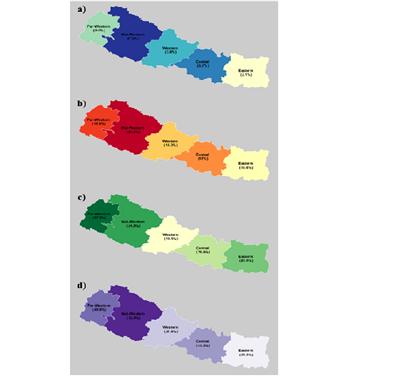There are currently 1.6 billion adolescents (aged 10-19 years) globally. This period of rapid change and development during the transition to adulthood presents challenges, with many adolescents exposed to a range of adverse sexual and reproductive (SRH) risks such as unwanted pregnancy, sexual and gender based violence, early marriage and HIV / STIs, which may have devastating long term consequences on their future health and life-chances. Colleagues from within the department are active in a number of areas of adolescent sexual health research:
Highlighting births amongst the youngest adolescents
Each year, around two million girls give birth before the age of 16, with around half having their first birth before their 15th birthday. Although these young girls face specific and severe risks to their health and wellbeing, until recently statistics on adolescent childbirth were rarely disaggregated by age. As a result, very early adolescent motherhood is a hidden problem, which has failed to gain the attention it deserves.
Dr Sarah Neal, Professor Zoe Matthews and other colleagues within the department have developed reliable estimates of very early adolescent motherhood in low and middle income countries, as well as evidence on characteristics and risk factors for those who give birth while very young. Her work also emphasizes that very young adolescent births are particularly concentrated amongst the poorest, least educated and rural residents (thus compounding their disadvantage). Dr Neal is working closely with a range of non-academic partners including the World Health Organisation, UNFPA and other non-governmental organisations to use this evidence to raise the profile of this important issue.
Measuring and mapping inequities in sexual health outcomes for adolescents

While progress has been made globally in improving adolescent sexual health, these gains have not been experienced equally between and within countries. Sarah Neal and Zoe Matthews, along with colleagues from WorldPop have worked closely with the World Health Organisation to highlight inequalities in progress in reducing adolescent first births among the poorest and most vulnerable adolescents, as well as using geo-spatial techniques to identify “pockets” of high fertility with countries, which enable policy-makers to target their resources to areas where they are most needed.
Mapping early adolescent pregnancy: predicted prevalence of birth before 16 years at district level in Nepal (from Neal, S., Ruktanonchai, C. W., Chandra-Mouli, V., Harvey, C., Matthews, Z., Raina, N., & Tatem, A. (2019). Using geospatial modelling to estimate the prevalence of adolescent first births in Nepal. BMJ Global Health, 4, [e000763].)
Migrant adolescents in Latin America
Dr Sarah Neal and Dr Amos Channon are both investigators on the ReGHID project, which includes research on the sexual health of adolescent migrant women and girls in Latin America.
Adolescent sexual health in South Africa
The incidence of HIV infection among adolescents and young adults (particularly girls and young women) in South Africa remains very high, yet this group is less likely to access HIV testing, prevention and care opportunities compared to other age groups. Professor Nuala McGrath, with colleagues at the Africa Health Research Institute in South Africa and University College London, is involved in a range of research on adolescent SRH in the context of high HIV incidence and prevalence in rural South Africa including:
- An NIH-funded programme of work that aims to maximise combination HIV prevention, uptake and retention by adolescent girls and young women.
- A Wellcome Trust - funded three-year cohort study of change in social networks, behaviours & HIV status in young people.
- Analyses of secondary data from an evaluation of the DREAMS (Determined, Resilient, Empowered, AIDs free, Mentored and Safe) programme.
- Estimating STI prevalence among youth.
- Understanding transitions to adulthood in the context of HIV – from school to employment.
Other work within the department includes research on dual contraception use among adolescents in sub-Saharan Africa in contexts of high HIV risk, maternal health outcomes from adolescent pregnancy and the link between education and adolescent pregnancy in Latin America.